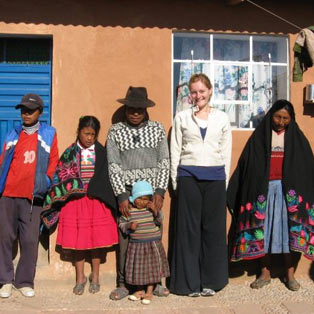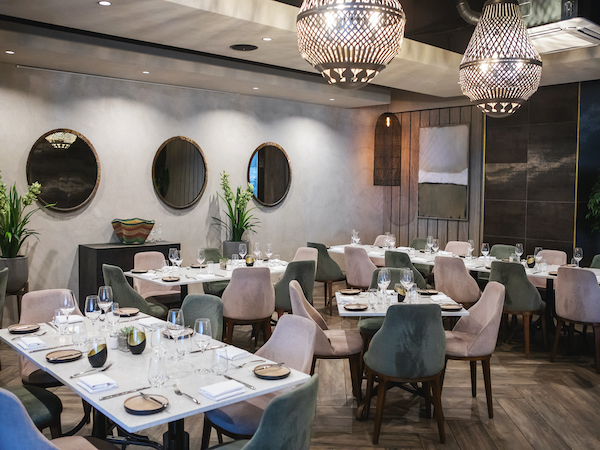News
In darkest Peru
Tuesday, May 3rd, 2011
“It squeaks”, my fellow traveller, Dan, tells me, when I ask about our dinner. I take a seat beside him in the little earth-floored kitchen, faintly worried that dinner may be some form of rodent. We’re in Peru, after all, staying in the home of a local family on an island on Lake Titicaca. They speak only Quechua, (which is sort of fine since our Spanish is fairly appalling anyway), but what it does mean, is that we haven’t the faintest clue whether we’re eating guinea pigs or guano.
There is no sign of meat on our plates, however. Instead, Dan is prodding at a vast white disk, the size of a side plate, which lies atop a pile of roasted tomatoes. Gingerly, I take a bite of my own edible saucer. As my teeth make contact, I see what he means. It squeaks like fingernails being dragged across a blackboard.
“Ugh!” I grimace.
“Omelette?” Dan offers, wincing as he chews.
“Toughest omelette on the planet. And it’s more dense; like crème caramel…”
“Crème caramel a la three-day old sock…”
“Goat’s cheese”, another tourist tells us later, “Incredibly strong, fried goat’s cheese”.
This is typical rural, Peruvian food. Hearty, rustic, and, for the most part, tasty. Corn, beans, quinoa and potatoes are the staples. In fact, Peru is home to an impressive 300 varieties of potato. We try some with a faintly meaty flavour, others with a texture like lumpy porridge, and others which make the perfect chip, which are served soaked in meat juices.
Guinea pig, eaten predominantly by tourists, is less impressive. When we bow to pressure and order it finally, in a fairly classy restaurant in Cuzco, the poor thing arrives whole, grilled within an inch of incineration, and with its two front incisors still clenched in its jaw. I rotate the creature so that it’s staring at Dan instead, and take a bite. Aside from the lack of moisture in the overcooked meat, there is another problem: there’s barely a mouthful of flesh on the tiny beast.
More successful, is Alpaca steak. At the bottom of the 1000 metre deep Colca Canyon – in a village so remote that the villagers still wear full traditional dress – we eat the tender, light meat for the first time. With a low cholesterol level and juicy flavour, it’s a little like ostrich steak. (Also in this remote spot, should you ever find yourself there, reside the best pancakes I’ve ever tasted, made with orange juice and aniseed.)
It’s the little things too that one has to become accustomed to with foreign cuisine. Instead of Coca Cola, there is luminous yellow, bubble-gum flavoured Inca Kola, and on the alcoholic side, Pisco Sour. Made from Pisco, a locally produced grape brandy, lemon juice and egg whites, it is frothy and citrusy and refreshing, and despite travellers’ tales of salmonella, it becomes a favourite.
Instead of Ceylon tea, it is coca leaf tea, which we get used to drinking. A relative of cocaine – minus the active ingredients – these bay leaf-shaped leaves come floating in a cup of boiling water, and are supposed to mitigate the effects of altitude. High up on Lake Titicaca, where we find ourselves panting after walking a few metres, we even chew them the way the locals do, making a wad of them in our mouths and grinding them up with an alkaline powder made with the burnt husks of quinoa, to release the juice. I’m not convinced that it has any influence on my experience of the altitude, but the chewing and the odd zinging sensation certainly distracts us.
My favourite memory of Peruvian food though, comes entirely unexpectedly.
On the day we get back from our three day trip on Lake Titicaca, I decide to step out and buy stamps for a postcard. As I open the front door of the hostel, I step straight out into a parade. Row on row of women are dancing in traditional dress, their scarves swirling. Groups of women in different matching costumes follow, along with a full marching band. Joining the little tail of locals and tourists, I follow the procession through the streets, until, eventually, they disappear into a town hall.
It’s only then that I stop and look around. “Which direction is the hostel?” I wonder faintly to myself, stopping suddenly and looking around. There is an American tourist standing next to me, also looking a little bewildered. Like children after the pied piper, we’ve got caught up in the parade and are thoroughly lost.
An old band member is waiting in the hall doorway. Noticing us, he calls us over and invites us inside. The American and I look at each other, shrug, and enter the hall.
Quarts of local Cuzqueno beer are pushed into our hands, then steaming plates of chops, corn and mash. We are instructed to pour some of the beer directly onto the floor – “for Pacha Mama”, the band tell us. “For everyone,” the leader of the procession tells us, when we try to resist.
Then, we’re pulled onto the dancefloor (which is, by now, a couple of centimetres deep in Pacha Mama’s beer) and are spun round and round in a sea of costumed dancers. As I leave the hall, there is beer seeping up the legs of my jeans, but I’m grinning.
This then, is my favourite memory of Peruvian cuisine: rustic, hearty, and tasty, but most of all, like Peru’s people – warm, friendly and welcoming.
By Katharine Jacobs








